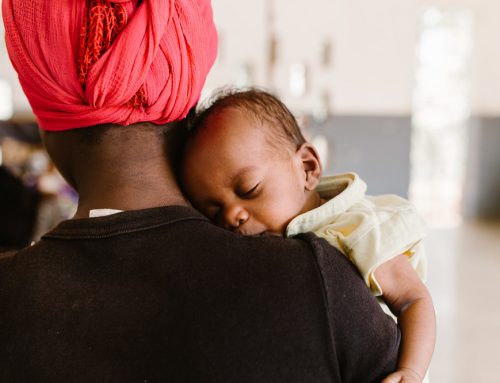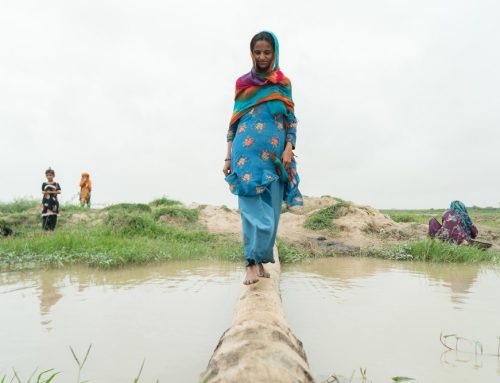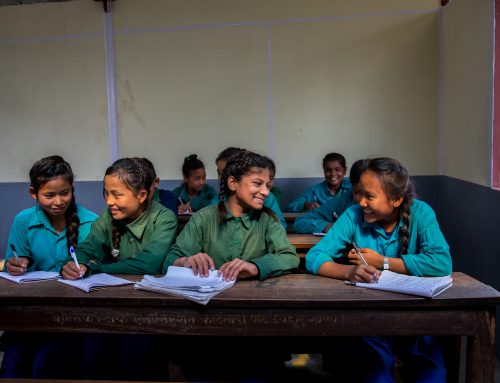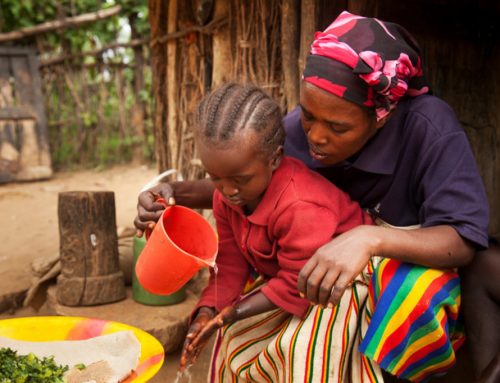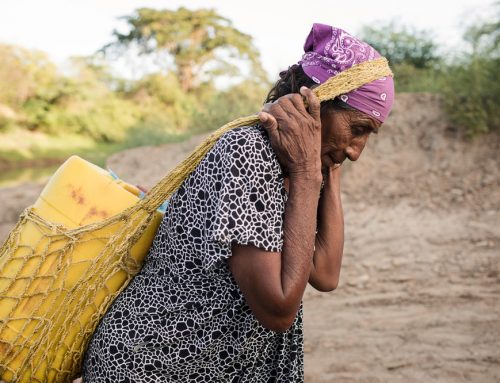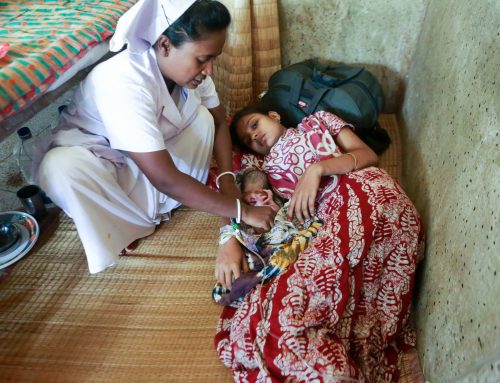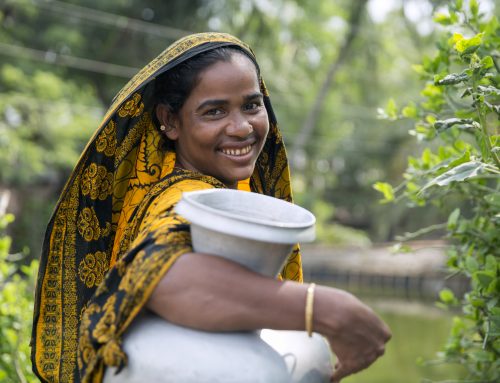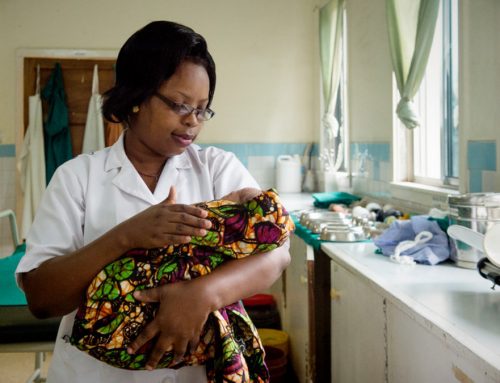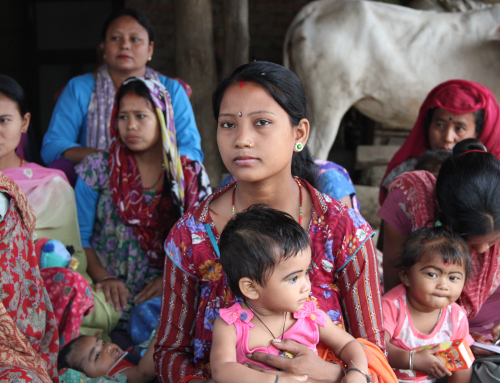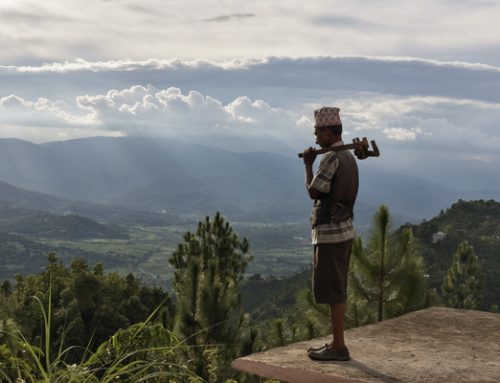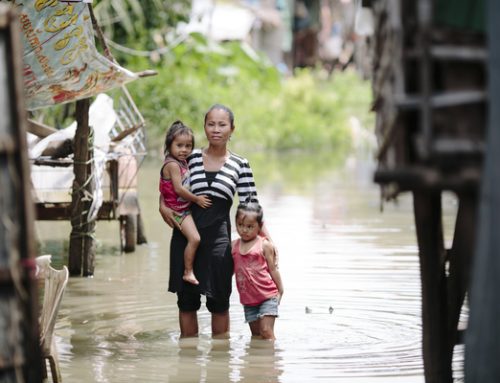WaterAid’s second-annual analysis of the world’s toilets, ‘Overflowing Cities,’ examines the state of city sanitation around the world, an issue becoming more pressing as two-thirds of the global population are expected to live in towns and cities by 2050.
India ranks top for having the greatest number of urbanites living without a safe, private toilet— 157 million – as well as the most urban dwellers practicing open defecation— 41 million. The problem is so big that the daily waste produced on the streets of India’s towns and cities is enough to fill eight Olympic-sized swimming pools, or 16 jumbo jets, with poo, every day. As cities expand the numbers of urbanites living without basic sanitation has swelled by 26 million since the year 2000.
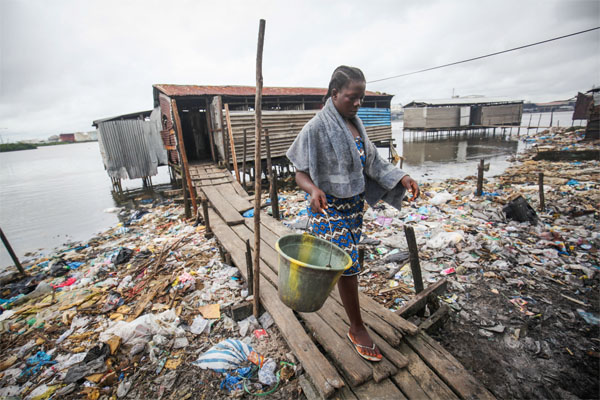
Roselyn Kwesi returns after using the facilities at the overhanging latrine in Monrovia’s Westpoint slum. Photo credit: WaterAid/ Ahmed Jallanzo
Among the other findings:
- War-ravaged South Sudan, the world’s newest nation, is the worst country in the world for urban sanitation in percentage terms. An estimated 84% of urbanites have no access to a toilet and every other urban-dweller there practices open defecation.
- Africa’s biggest economy, Nigeria, is falling furthest behind in reaching its urban population with a toilet. For every urban dweller reached with sanitation since 2000, two were added to the number living without, an increase of 31 million people in the past 15 years.
- Fast-growing China is making the most progress in reaching its urban population with sanitation. It’s managed to build toilets faster than the pace of new arrivals, reaching 329 million people since 2000, and outpacing population growth by 9 million.
“By 2050, two-thirds of the world’s population is expected to live in towns and cities,” says Nicole Hurtubise, CEO of WaterAid Canada. “Put into context, the line-up for people waiting for toilets in our cities and towns would stretch around the world 29 times. Everyone deserves access to a toilet, not only for personal dignity, but to avoid the many preventable health risks, such as cholera and Ebola, associated with improper sanitation. It’s crucial we confront the issue now to prepare for the future.”
The report examines the problems facing more than 700 million urban dwellers around the world living without decent sanitation. An estimated 100 million of these have no choice but to defecate in the open– using roadsides, railway tracks and even plastic bags dubbed ‘flying toilets’.
The high population density of urban areas means that diseases spread fast in the absence of good sanitation.
One child dies every two minutes from diarrheal diseases caused by dirty water, poor sanitation and hygiene. Globally 159 million children under five have their physical and cognitive development stunted; many of such cases are caused from repeated bouts of diarrhea attributed to dirty water, poor sanitation and lack of hygiene.
“This report exposes several countries for failing to make progress in providing urban sanitation, despite rapid economic growth,” says Andrés Hueso, senior policy analyst on sanitation at WaterAid. “Good sanitation is the bedrock of public health. We need to prioritize the provision of safe toilets for everyone for a healthier, more sustainable future.”
This World Toilet Day, WaterAid is calling for:
- Everyone living in urban areas, including slums, to be provided with a toilet to ensure public health is protected.
- More money, better spent from governments and donors on sanitation, clean water and hygiene for the urban poor.
- Coordination from city planners, governments, NGOs, private sector organizations, informal service providers and citizens to address this crucial issue.
- Sanitation workers to be given the respect they deserve with stable employment, safety and decent pay.
Read and download the full report.

